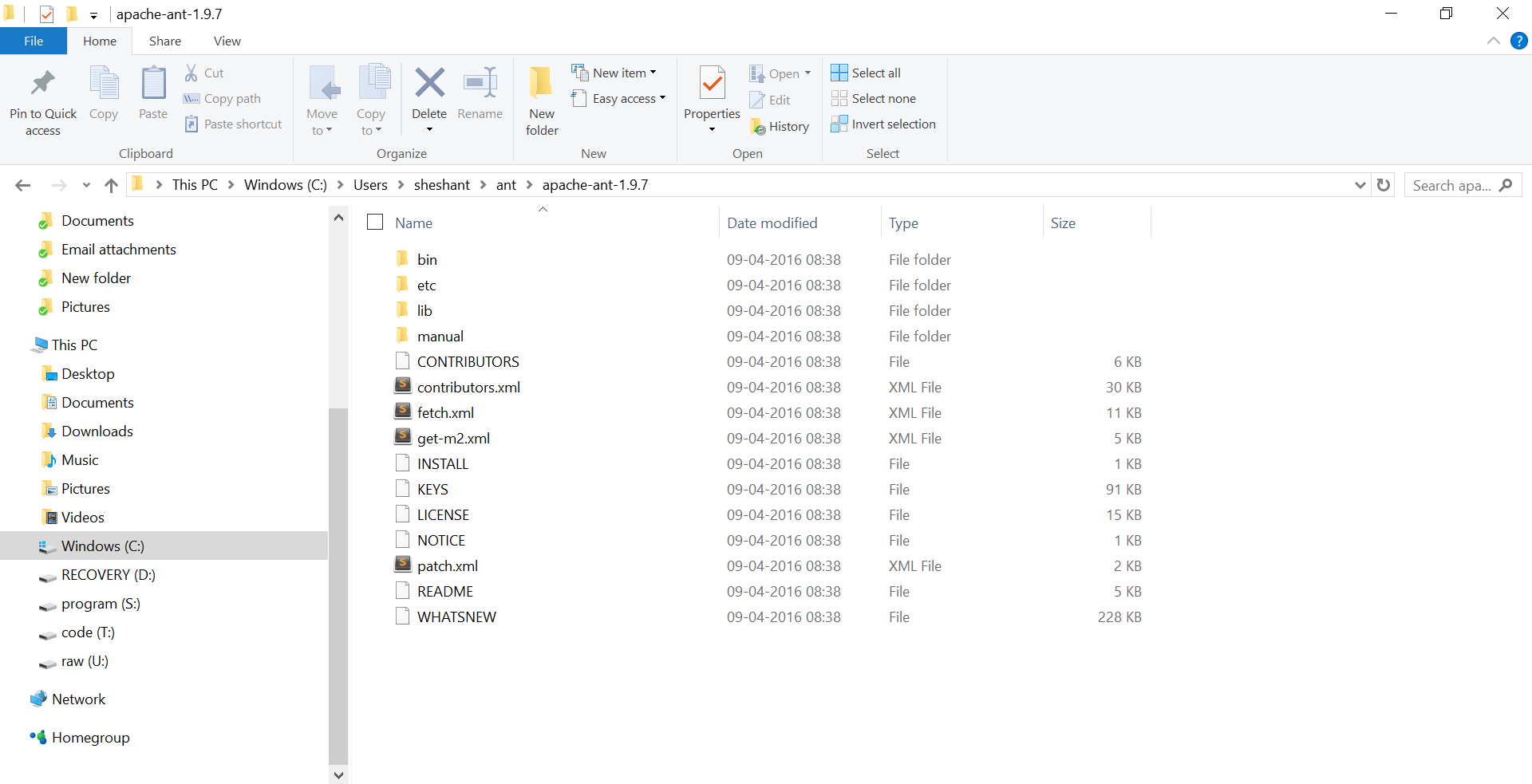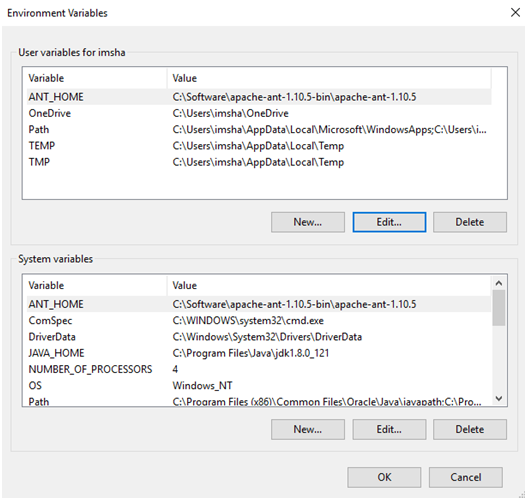

You have successfully installed Apache Ant on your Centos 8 server.

To verify if Apache Ant is installed properly use the ant -v command which will display the Apache Ant version: $ ant -versionĪpache Ant(TM) version 1.10.7 compiled on September 1 2019 Apache Ant is a build tool with special support for the Java programming language but can be used for just about everything. $ sudo chmod +x /etc/profile.d/ant.shĠ3- Load the environment variables for the current session by using the following command. $ vi /etc/profile.d/ant.shĠ2- Make the script executable by using the chmod command. To do that, create a new file named ant.sh inside of the /etc/profile.d/ directory. Where you installed Ant: ANT_HOME=/ apache-install-dir/apache-ant-1.7.0If you get an error saying sudo: unzip: command not found, install the unzip package with: sudo dnf install unzip.Ġ1- We will now configure the PATH environment variable to include the Apache Ant’s bin directory. bash_profile fileĪdd the following lines to the file, substituting the directory Uncompress the downloaded file into a directory. Settings and make sure they are pointing to the correct directory locations. Installing Apache Ant Getting Apache Ant The Short Story To get up and running with the binary distribution of Ant quickly, follow these steps: Make sure you have a Java environment installed. If you do not see an error message, check the environment variable If a Build not found error message appears, To test the setting, type ant at a command Make sure JDK is installed, and JAVAHOME is configured as the Windows 10 environment variable. Set the variable name to ANT_OPTS and the variableĪdd %ANT_HOME%\bin to the end or beginning Select New again to create the ANT_OPTS environment Value to apache-install-dir \apache-ant-1.7.0 and click OK. In our case this would be the D:personal dataapache-ant-1.9.7bin folder. Set the variable name to ANT_HOME and the variable Step 5: Append the path to the Apache Ant batch file to the PATH environment variable. Under System Variables, select New to create the ANT_HOME environment Go to Advanced, and then click the Environment Variables button.

Go to Start -> Control Panel, and double-click the System icon.

You then need to set the ANT_HOME environment variable to add binaries to your PATH. It is a universal command-line tool, such as Java and Linux.Installing Apache Ant on Ubuntu, Debian, and Linux Mint will be as simple as this guide.Apache Ant is written for Java in the Apache Software Foundation, along with Apache License 2.It does not have a. You can download the latest versionĭownloading, uncompress the archive into a folder. What Is Ant On Linux The final day of the year, December 28, 2018.Ant by Apache stands for Automation by Integrating Java and Linux. Developing With Apache Ant 1.7.0 or AboveĪpache Ant is a build tool that is used extensively by both the Liferay


 0 kommentar(er)
0 kommentar(er)
